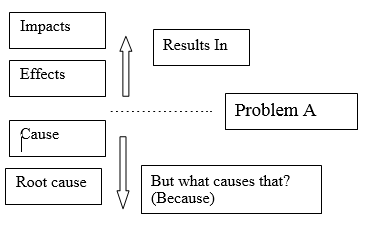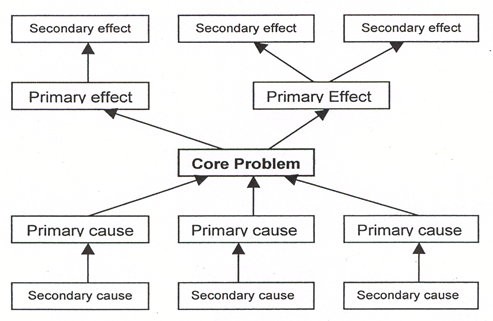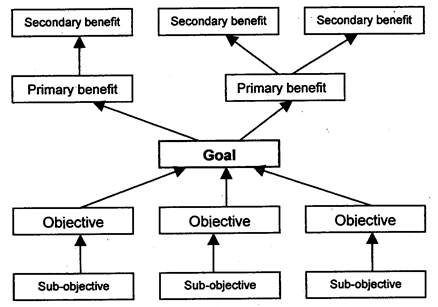
Category:
A primary tool (either this or a fishbone diagram)
Description and Purpose:
This is a visual mapping tool for synthesizing and visualizing the results of research and analysis on a specific issue. It helps to dissect a problem, to establish root causes (which aids the design of effective and targeted interventions) and effects.
Method:
This visual mapping tool is similar to a Fishbone Diagram (see note below). It is useful after problem identification to place issues in their wider context, and clarify that the issue under question is the real problem, not a symptom of a different problem.
This tool is ideally suited to group work – with colleagues, partner organizations, or a coalition. A facilitator can aid the group. To start the diagram or tree, generate the causes and effects on Post-it notes and stick them onto a large piece of paper.
Ask ‘but why’ or ‘what causes that?’ at each stage when seeking root cause.
Ask ‘what happened’ or ‘what does that lead to’ at each stage when seeking final impact.
It is effective when done using ‘post it’ slips, as these can be moved around as the process unfolds e.g. when causes are later identified as root causes.
Diagrammatically, the mapping can unfold as follows:
This can also be designed as a problem tree. The tree has a trunk that represents the core problem, roots that represent the causes of the problem, and branches that represent the effects.
In considering problem causes, do not forget to include the policy environment and whether new policies are necessary or whether existing policies are being implemented effectively.
Next, the effects of the problem are drawn (as branches of the tree). Once again, the diagram should identify links between issues by joining branches together. Find out what people know about each root cause and each effect of the problem. Details and reasons may reveal further causes and effects.
The group can then negotiate the relationships between the cards and how they should be placed. The diagram or tree can be re-framed by making one of the causes or effects as the core problem, and re-adjusting the other cards around it. You may want to do this to refocus your issue to one that you can better influence.
You can then use the diagram or problem tree to produce a solution tree, where the trunk is your main aim, the roots are objectives and the branches are the benefits that will arise from your aim being met.
You reverse the core problem to create a goal (or aim) (cover the card with a new one with the goal written on it). Similarly you convert the effects to benefits, and causes to objectives – simply by reversing the language used.
At this stage, you should not leap ahead into how the objectives might be achieved. For example, if one of the ‘causes’ was ‘lack of understanding’, your ‘objective’ should be ‘increased understanding’, not to institute an education program – there may be other methods of achieving the objective that you will want to consider at a later stage in the planning process.
The objectives do not all have to be advocacy objectives. They can also be objectives that are best met through other types of animal welfare work. Using this technique can enable you to devise an integrated strategy of projects and advocacy, both being part of your wider program. The advocacy objectives will not necessarily fall in the first line next to the goal – these may be quite broad and the most focused objective needed for advocacy may be on the second row.
In the course of doing the problem and solution trees, you may realize that there are gaps in your knowledge that need further research. That is fine, and is another benefit of using a tool such as this for your analysis.
The effects and benefits you produce are important, as they are going to form the basis of your compelling argument that brings you more support and eventually persuades the policy maker to change their position.
The objectives you arrive at are important because they may provide a basis for your project or wider program.





